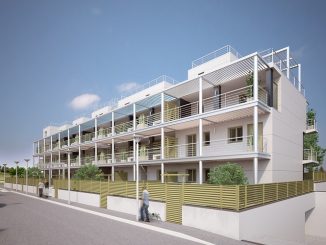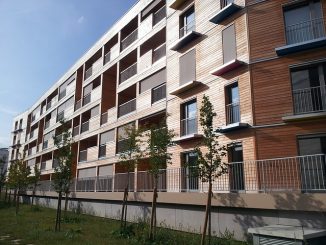
For decades, or even more, the building has naturally been a clearly identifiable unit, from its construction to its eventual destruction.
How does the building adapt or resist to the sharing of some systems such as heating and cooling? How should it prepare for its integration into these more and more global systems?
I have mentioned several times in this blog the present development of heat or cold networks which introduce, at the neighborhood level, systems shared between several buildings. Other shared systems are also developing in parallel: decentralized electricity generation (i.e. solar photovoltaics), energy storage, etc. These new equipment result in complex energy flows, inside the neighborhood, sometimes between buildings or between the district and the ” outside network “.
The evolution of energy systems thus transforms the building into both an intelligent autonomous unit and a “cell” reacting to more global energy optimization mechanisms within a neighborhood or a city. The building thus contributes to the definition of the overall energy system (which would not be exactly the same if the buildings were different) but the design of the building is also influenced by the overall energy system (buildings would not be exactly the same in two different energy systems).
To cope with these changes, several industry bodies and associations felt the need to act and to specify what should become the buildings of the city of tomorrow: the cities themselves, eager to lead the developers and especially the promoters towards buildings which would naturally integrate into their future energy infrastructure, but also the building industry as a whole, careful to remain connected to the market.
As a result, several “standards” or sets of specifications have emerged to build “Smart Grid ready” buildings in a universal Plug & Play trend. The universality sought, for a standard that would apply to all the buildings of a country or of a region, is contrary to the principle of holomorphism described above: buildings will not be exactly the same in two energy systems. Some infrastructure elements will have to be adapted; the energy flows, to which the building will participate, will be different and, therefore, the energy reactions of the building as well; the data provided will vary according to the nature of the building operators.
None of the standards to which I refer clearly mention this paradox or ambiguity. It is nevertheless underlying: the proposed specifications present themselves as the common core to be respected. Therefore, they do not satisfy the application or local requirements, as well as those related to the building operators; they are limited to very general technical characteristics: the building must be able to communicate or to react to certain events … what buildings have been doing for many years.Is the poverty of many of these standards a misunderstanding of the systems in which buildings must now be included? Or the desire to create a slightly empty marketing concept?
I had participated, in 2012, in a first exploratory work for a district of the “Plaine du Var” in France. The projects I have carried out since then, in other countries, have confirmed the necessity of simultaneously designing all the elements of the system: buildings, shared energy systems and other urban energy-consuming applications. It is interesting to identify the guidelines and the main stages of such a design, including permanent round-trips between the whole and the parties.
“Local” initiatives that concern only one part of the system, the building itself or another one, tend to introduce confusion and misunderstanding in a process that is difficult to apprehend by public or private non-specialist decision-makers. I have seen them counterproductive in some cases. Pity !




Leave a Reply